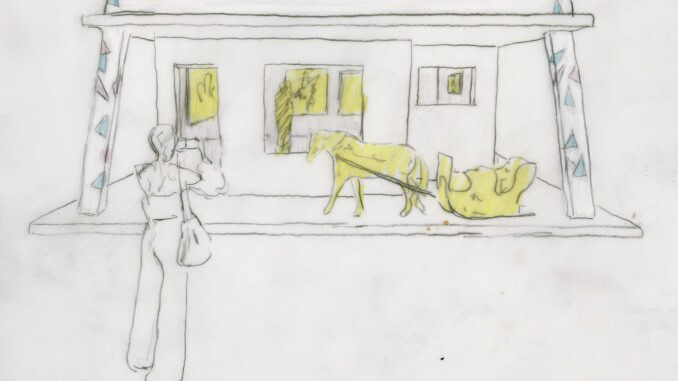
Saturday, November 8, will see the opening two new exhibitions and a new guardhouse installation. Enrique Martínez Celaya: The Sextant features a sugar-coated scale model of the house his father built in Cuba during and just after the Cuban Revolution, together with artwork that references the ever-changing balance between history, memory and imagination.
Between 1957 and 1963, the artist’s father built a modernist house in a small coastal village in Cuba. The time period spanned the Cuban Revolution, the Cuban Missile Crisis, and the United States embargo against Cuba, a political context that in various ways reflected the story of the house. This house, in which Martínez Celaya’s family waited for exile, now serves as an official wedding venue, carrying with it the contradictions and the scars of the Communist Revolution and its aftermath. The installation The Sextant is a smaller-scale recreation of the house, which will serve as an embodiment of the cultural, architectural, and emotional responses to the Cold War in the Caribbean.
Intersections: The Architecture of Victor Adegbite and Charles Polónyi in Ghana addresses the remarkable collaboration of a Ghanaian and a Hungarian architect in 1960s Ghana in the context of early sub-Saharan decolonization.
Intersections traces the collaboration of two architects who responded to that call: Ghanaian Victor Adegbite (1925–2014) and Hungarian Charles Polónyi (1928–2002). Polónyi arrived in Accra as part of Eastern European technical assistance programs supporting Ghana’s transition to socialism. He worked for the Ghana National Construction Corporation, where Adegbite—a Howard University graduate—served as chief architect. In their work at the GNCC, they mobilized architectural resources from the socialist, capitalist, and non-aligned countries and designed buildings that responded to Ghana’s needs, means, and aspirations.
The exhibition centers on the housing projects designed by Adegbite and Polónyi, which embodied the many dimensions of independence—from representing a new elite to the state’s provision of housing for all social groups.
Hande Sever’s art installation Specters of the Red Woodstock reflects on the World Festival of Youth and Students in East Berlin (1951 and 1973), and the role of artists and international secret services at these gatherings.
Enrique Martínez Celaya, The Sextant, 2023, preliminary installation sketch
Courtesy of the artist


